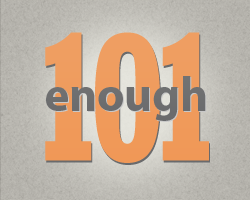
Editor’s Note: This post is intended to provide a contextual background for understanding the complex issues that the Enough Project works on. It is part of the series Enough 101.
The Enough Project focuses on crimes committed in some of the world's most deadly and protracted conflicts. To understand these crimes and advocate against them, there are several important legal terms to know. While not all of these crimes exist in all of the areas where Enough works, this vocabulary list defines words to know to understand the atrocities committed in South Sudan and Sudan, eastern Congo, the region affected by the Lord’s Resistance Army, and Somalia.
Refugees are people who are outside their country of origin or outside the country of their former habitual residence, and unable or unwilling to return to their country owing to a well-founded fear of being persecuted. The persecution feared must be based on at least one of five grounds: race, religion, nationality, membership of a particular social group, or political opinion.
Asylum seekers are people who have applied for asylum (i.e. claim to be refugees) but whose refugee status has not yet been determined. If the host country decides that the asylum seeker does not qualify as a refugee, the asylum seeker can be deported back his or her home country.
Internally displaced persons, or IDPs, are “persons or groups of persons who have been forced or obliged to flee or to leave their homes or places of habitual residence, in particular as a result of or in order to avoid the effects of armed conflict, situations of generalized violence, violations of human rights or natural or human-made disasters, and who have not crossed an internationally recognized State border,” according to the 1998 Guiding Principles on Internal Displacement.
The main difference between IDPs and refugees is that IDPs have not crossed an international border from their country of origin. Also, while refugees must be fleeing from strictly defined forms of persecution, IDPs include those displaced by armed conflict, human rights violations, and natural disasters.
The Integrated Food Security Phase Classification, or IPC, is a 5-level scale that standardizes the food security classification system. This scale is used by countries around the world, including the United States’ Famine Early Warning System Network, or FEWS NET. The phases are:
- Generally Food Secure
- Moderately/Borderline Food Insecure
- Acute Food and Livelihood Crisis
- Humanitarian Emergency
- Famine/Humanitarian Catastrophe
A humanitarian emergency, the second most severe level of food insecurity, is characterized by more than 15 percent of children being malnourished, and lack of food causes between one and two deaths occur per day in every 10,000 people. The difference between a humanitarian emergency and a full-scale famine is specifically nuanced; see this table (PDF) for more information.
Famine/humanitarian catastrophe is a rarely used and very distinct term. In 2005, the United Nations specified three criteria for defining a famine:
- Twenty percent of the population consumes fewer than 2100 kilocalories of food per day.
- More than 30 percent of children acutely malnourished.
- Two deaths per day in every 10,000 people—or four deaths per day in every 10,000 children—caused by lack of food.
According to the World Food Program, famines have been declared in southern areas of Sudan (2008), in Gode in the Somali region of Ethiopia (2000), the Democratic People’s Republic of Korea (1996), Somalia (1991-1992), and Ethiopia (1984-1985).

